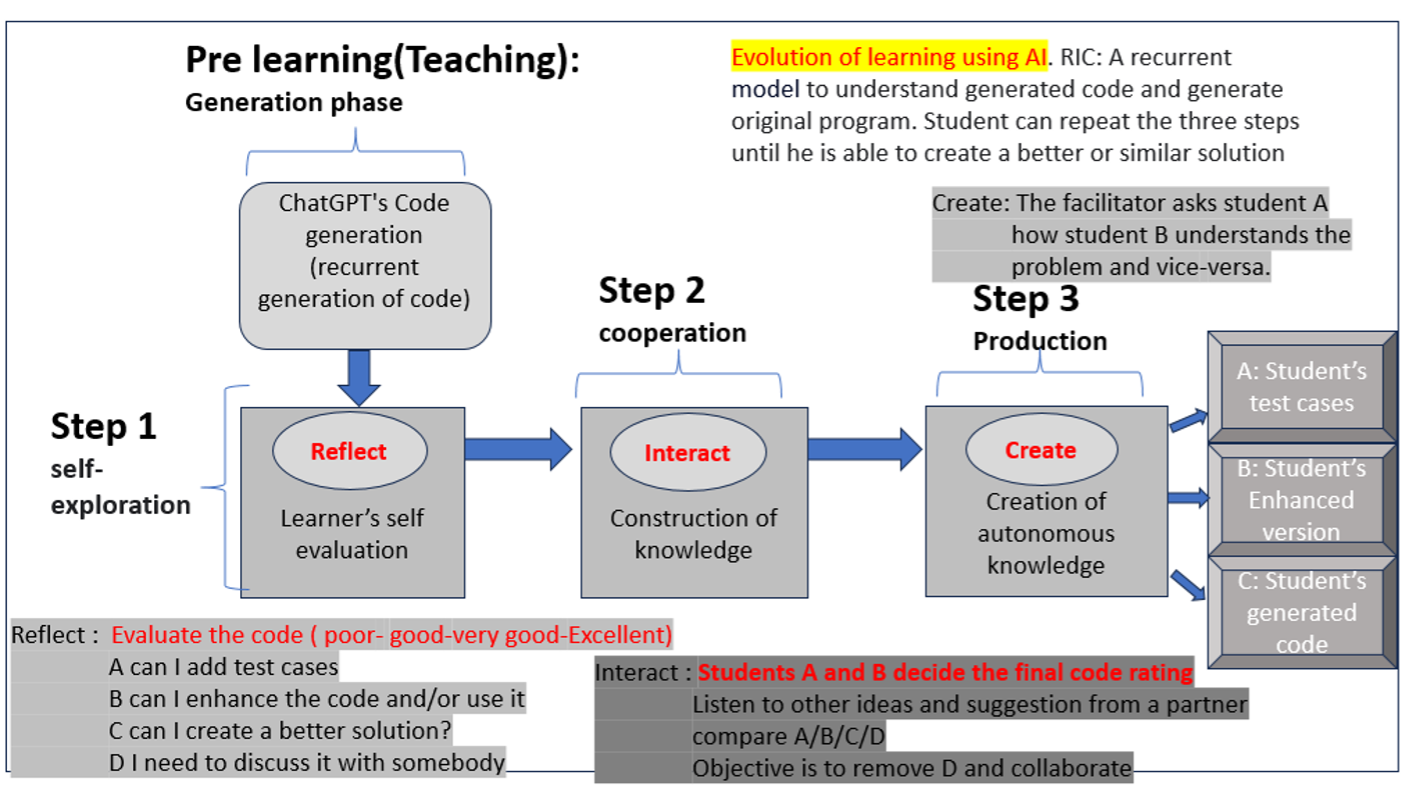The ABCs of ChatGPT Using RIC Model
Programming and coding have become essential tools in solving real-world problems. With the increasing digitization of almost every aspect of our lives, the importance of programming and coding has grown significantly.
My approach of using ChatGPT is based more on the transformative power of students in learning rather than transformative power of technology in education. It is based on increasing engagement, improving learning by empowering students to use ChatGPT as a tool to prepare them for their future careers, while having fun. Engaged students demonstrate enthusiasm, focus, and a willingness to understand and apply knowledge. It leads to better learning outcomes and a more effective learning experience.
This transformative approach seamlessly merges the best of both traditional classroom
teaching and the use of artificial intelligence as a tool.
The Reflect-Interact-Create model is designed to help students acquire critical thinking skills in analyzing and designing coding practices and handling the implementation of optimal solutions in preparation to meet the demands of the workplace’s competitive technological environment.
Through my teaching experiences, I have found that students have difficulty developing and implementing real world solutions related to different fields such as climate change, healthcare, Education and Cybersecurity.
RIC is a new ChatGPT-based model named Reflect- Interact-Create (RIC) model to develop students’ critical thinking skills. The model incorporates critical thinking skills into the learning process which helps students deal with different types of problems efficiently. The results show that ChatGPT is an opportunity to innovate rather than a threat and an opportunity to build community by inciting discussions through collaboration.
The model comprises of many steps which extensively explore the evolution of learning using Artificial Intelligence. It starts with ChatGPT generated code, student self-explores her/his knowledge by understanding the code and by evaluating his ability to add test cases, to enhance the code or to generate a better solution. During the second step a student interacts with another student to reconsider her/his decision; the last step is when both students generate a new solution to the problem as a team. The model is recurrent. A student can repeat the three steps until he is able to create a better or similar solution to problems with different levels of difficulties (Introductory-Moderate-Challenging).
In other words, adopting the RIC model is a chance to grow with artificial intelligence.
Students perform problem-solving and decision-making more effectively. RIC is a perfect
self-engaging guide for whoever is interested in programming and coding. The model
trains students in how to think rather than how to access the information. It can
close the critical thinking skills gap between the high and low ability students.
Its approach is based more on the transformative power of students in learning rather
than transformative power of technology in education. It is based on “Give a man a fish, and you feed him for a day; teach a man to fish and you feed him
for a lifetime.”
Dr. Rizk Talk: https://uh.edu/eit/ai-event/virtual/